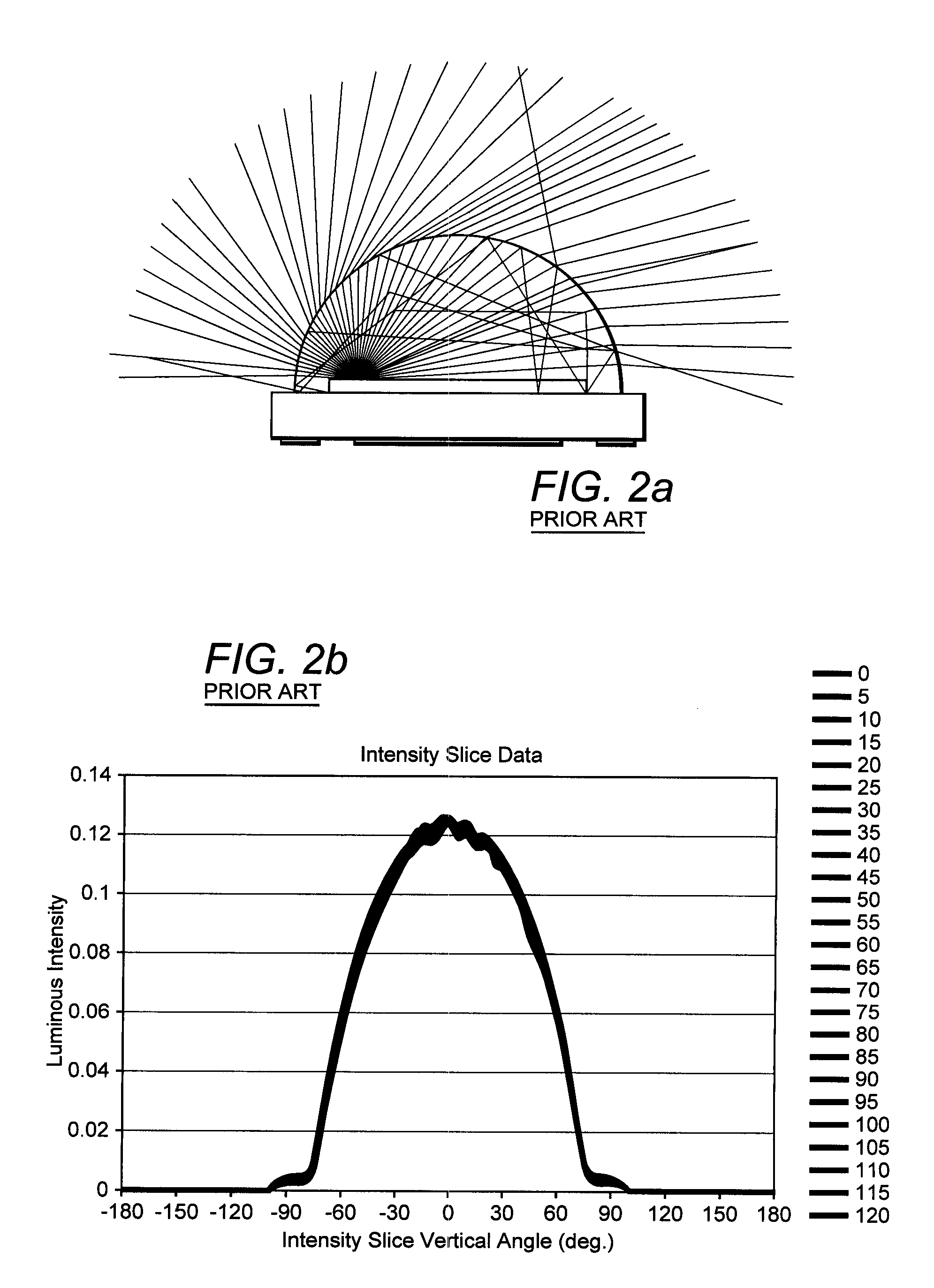Complex primary optics and methods of fabrication
a technology of primary optics and fabrication methods, applied in the direction of manufacturing tools, applications, instruments, etc., can solve the problems of insufficient process efficiency, loss of light emitted by led chips, and inability to meet the requirements of many applications,
- Summary
- Abstract
- Description
- Claims
- Application Information
AI Technical Summary
Benefits of technology
Problems solved by technology
Method used
Image
Examples
Embodiment Construction
[0071]Embodiments of the present invention provide improved light emitting device optics and packages and methods for fabricating the same, wherein the improvements are provided by fabricating more complex primary optics capable of shaping light beams over light emitters. The primary optics disclosed herein, and methods of fabricating the same, allow for more controlled or shaped light outputs from light emitters without the use of secondary optics. However, secondary optics may still be used in conjunction with these primary optics. Furthermore, the methods disclosed herein allow for the fabrication of arrays of optics according to the present invention in smaller areas because no moving parts or side action molds are required. Embodiments of the present invention may be used in combination with previously disclosed light extraction and optic approaches, allowing even greater flexibility in controlling the light emission pattern from LED devices. The invention may be applied to oth...
PUM
| Property | Measurement | Unit |
|---|---|---|
| temperature | aaaaa | aaaaa |
| angle | aaaaa | aaaaa |
| wide angle | aaaaa | aaaaa |
Abstract
Description
Claims
Application Information
 Login to View More
Login to View More - R&D
- Intellectual Property
- Life Sciences
- Materials
- Tech Scout
- Unparalleled Data Quality
- Higher Quality Content
- 60% Fewer Hallucinations
Browse by: Latest US Patents, China's latest patents, Technical Efficacy Thesaurus, Application Domain, Technology Topic, Popular Technical Reports.
© 2025 PatSnap. All rights reserved.Legal|Privacy policy|Modern Slavery Act Transparency Statement|Sitemap|About US| Contact US: help@patsnap.com



